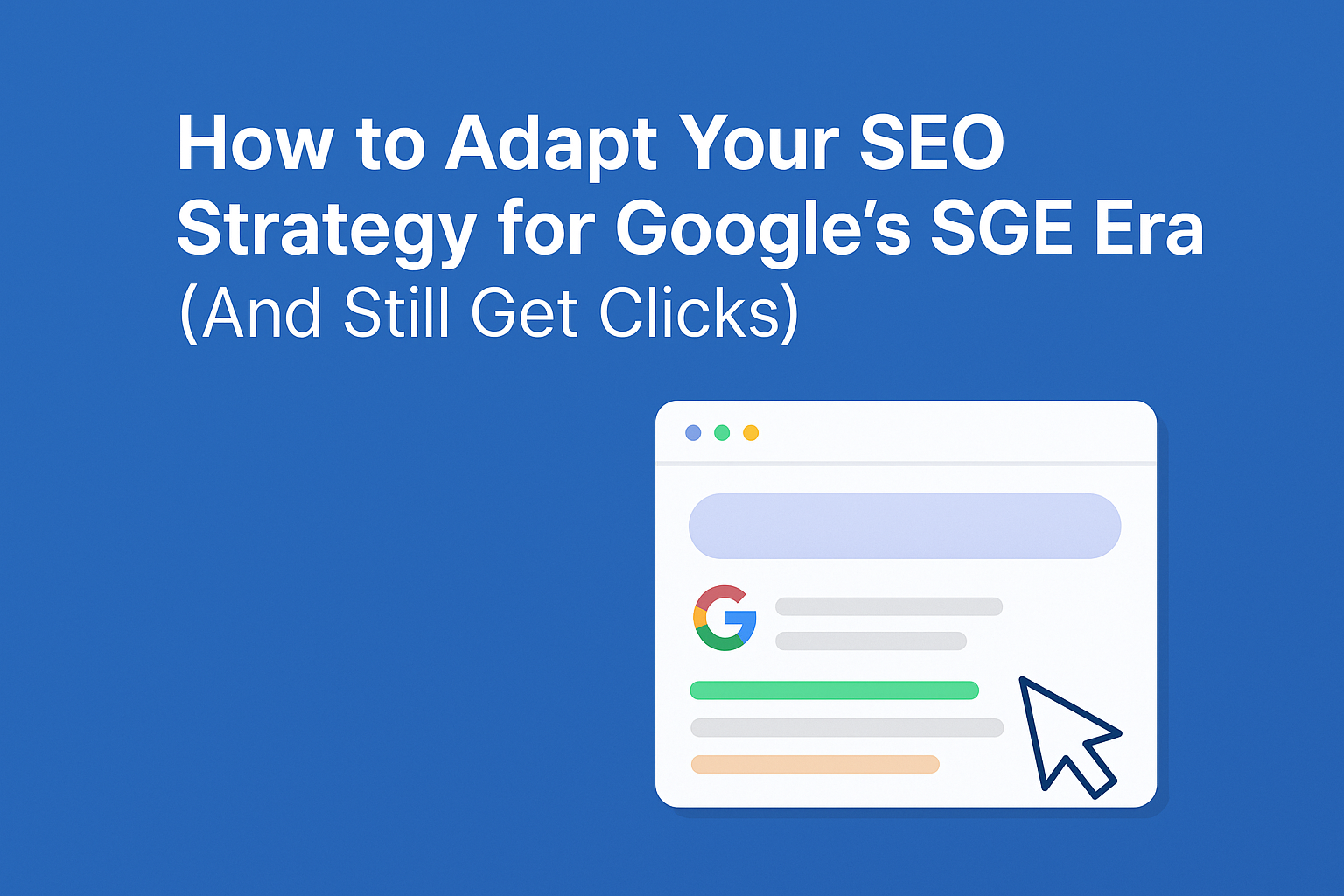How to Adapt Your SEO Strategy for Google’s SGE Era (And Still Get Clicks)
Google’s Search Generative Experience (SGE) is here—and it’s changing the SEO landscape fast.
Instead of ten blue links, users now see AI-generated answers right at the top of the search results. While it sounds helpful for users, it’s a big challenge for businesses and SEO professionals: fewer clicks, less visibility, and tougher competition for organic traffic.
So, what can you do?
Here’s a practical, easy-to-follow guide to help you stay visible, build trust, and keep growing—even in the SGE era.
✅ 1. Build Topical Authority, Not Just Keyword Pages
SGE prefers credible, comprehensive sources when generating responses. That means your website needs to show depth, not just breadth.
What to do:
- Create content clusters (pillar pages + supporting posts) on core topics.
- Cover every angle of your niche with guides, tips, tools, case studies, and FAQs.
- Example: Instead of just one post on “email marketing,” build a hub with articles on segmentation, automation tools, copywriting tips, analytics, etc.
💡 Goal: Become the source that SGE pulls its answers from.
✅ 2. Win Featured Snippets & Rich Results
Google’s AI often sources content from featured snippets, so aim to be in “position zero.”
How to optimize:
- Use clear H1-H3 headings, and answer queries in 1-2 concise lines.
- Include bullet lists, tables, and step-by-step guides.
- Add structured data (schema markup): FAQs, How-Tos, Reviews, etc.
📌 Tip: Use tools like Google’s Structured Data Markup Helper to create rich snippets easily.
✅ 3. Humanize Your Content with E-E-A-T
Here, E-E-A-T stands for Experience, Expertise, Authoritativeness, and Trustworthiness. SGE favors real-world experience, not generic fluff. Google’s E-E-A-T guidelines now put Experience front and center.
What to do:
- Share your personal results, case studies, or hands-on experience.
- Include author bios, mention credentials, and link to your profiles (LinkedIn, Twitter).
- Use real images, client stories, testimonials, and process breakdowns.
✍️ Write like a human who’s done the work—not an AI summarizer.
✅ 4. Optimize for Branded Search
With SGE eating up unbranded clicks, it’s time to build a brand people search for directly.
Steps to try:
- Promote your blog, podcast, or YouTube channel consistently.
- Encourage readers to search for terms like in my case I should optimize for, “Vin Writes SEO tips” or “Vin Writes Data Science articles.”
- Run email newsletters, social media campaigns, and webinars to increase awareness.
🧠 Rule: If users don’t remember your name, Google won’t either.
✅ 5. Don’t Rely Solely on Google—Diversify!
SGE is just the start. Search is becoming multi-platform. Don’t wait to lose traffic—own your audience.
Channels to focus on:
- Email marketing – your safest bet for long-term reach.
- YouTube – Videos often appear in SGE results and Google Discover.
- LinkedIn or Medium – great for B2B content.
- Reddit, Quora, and niche forums – build authority outside Google.
🚀 Grow your traffic pie instead of fighting for a shrinking slice.
✅ 6. Monitor, Adapt, Repeat
You can’t control Google, but you can control how you respond.
What to track:
- In Google Search Console, monitor CTR drops and changes in impressions.
- Compare traffic from top pages before and after SGE rollouts.
- Watch which content still performs and why—then replicate that success.
🧩 SEO is no longer set-and-forget. It’s test, track, and tweak.
✅ Key Takeaway
The rise of SGE doesn’t mean SEO is dead—it means SEO is evolving.
Yes, the game has changed. But those who:
- Build topical authority
- Optimize for snippets
- Focus on real experience
- Build a brand
- And diversify channels
…will still win in the long run.
